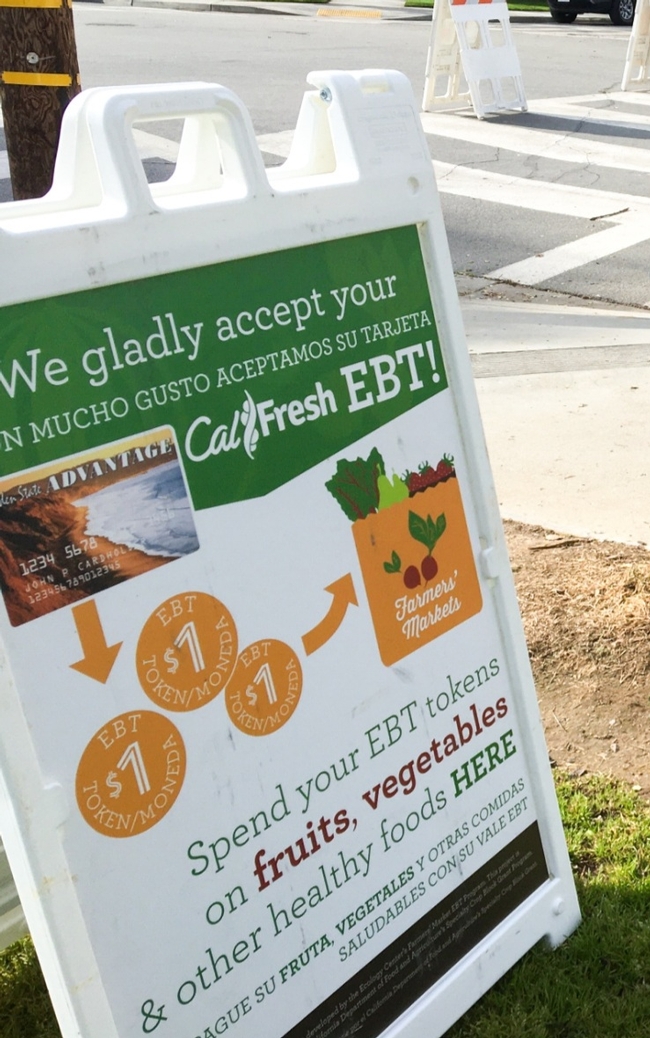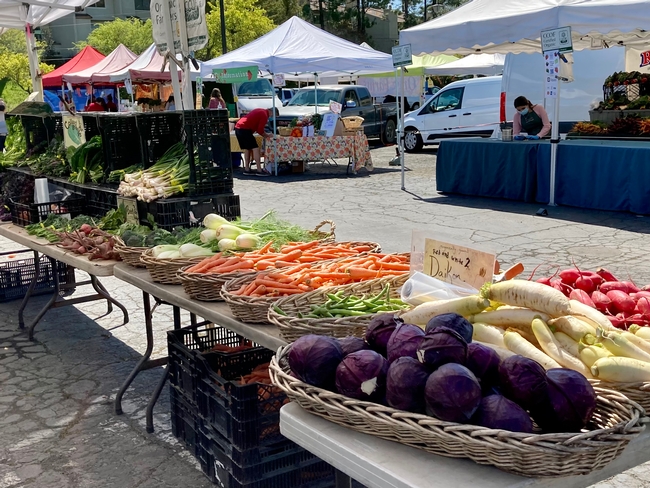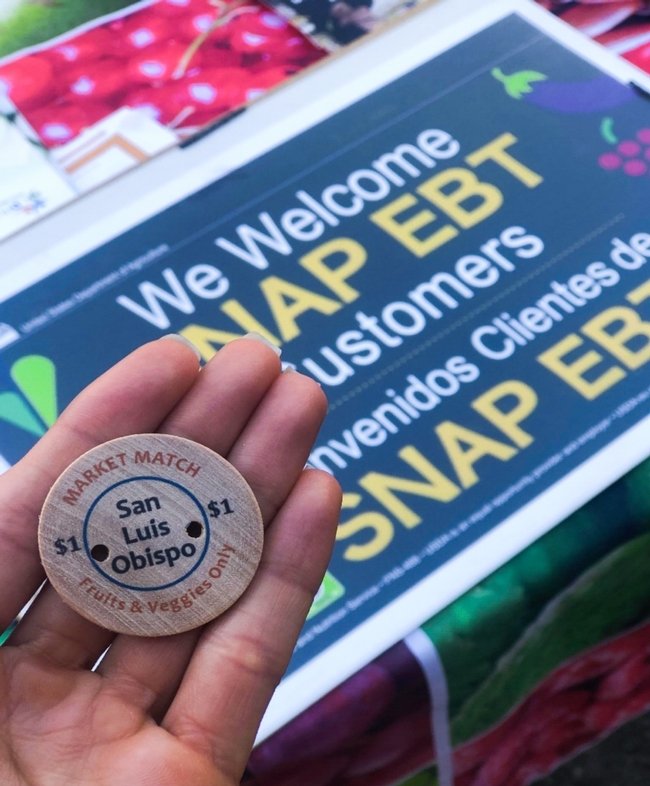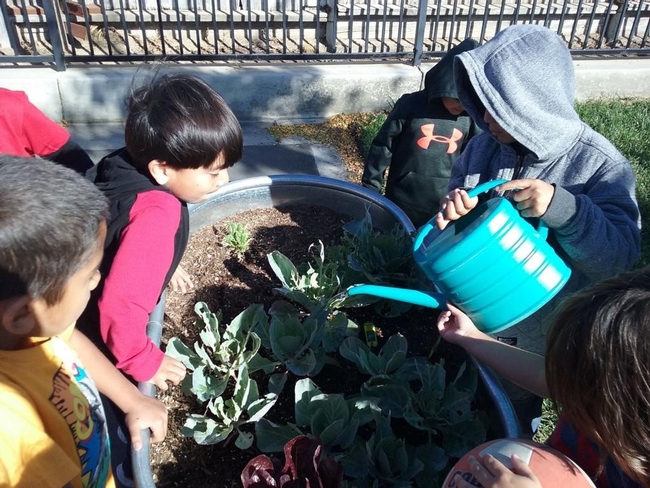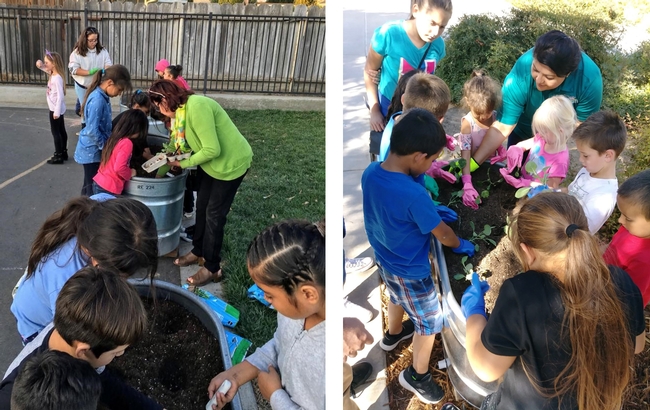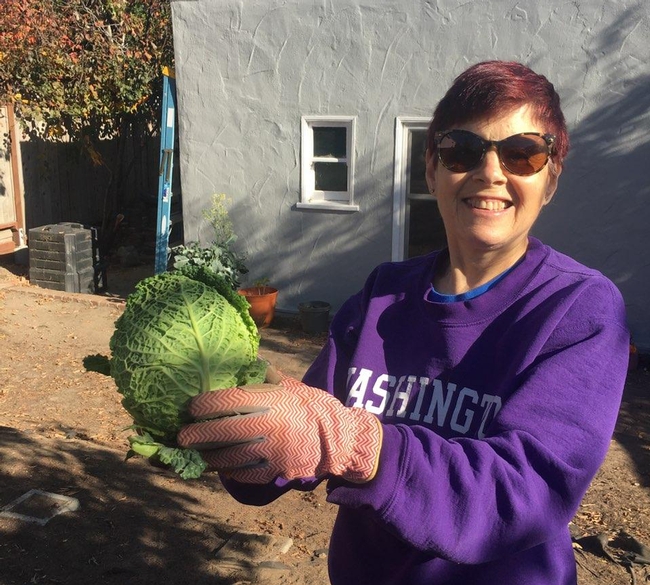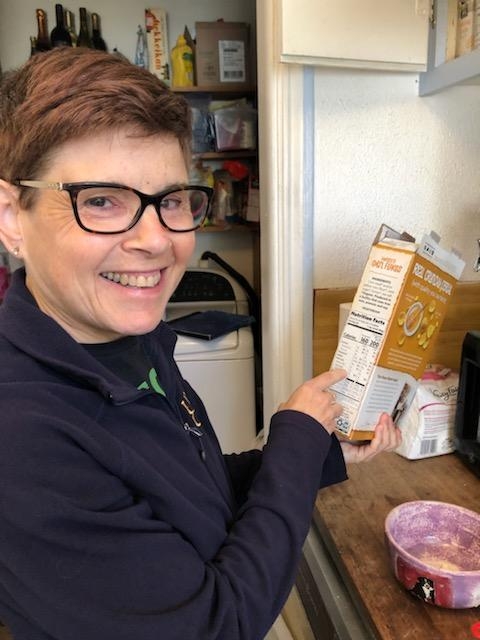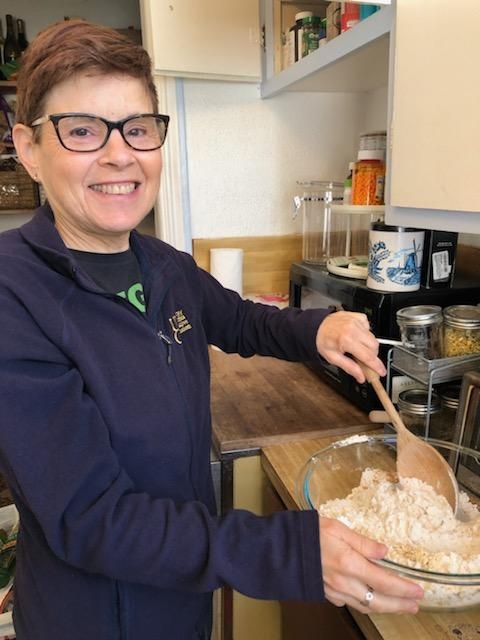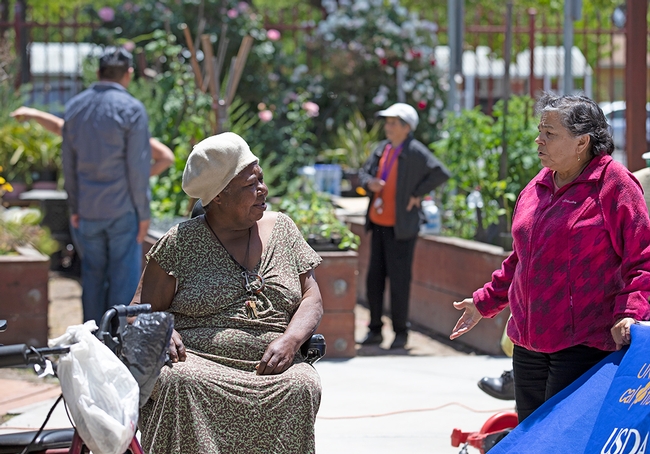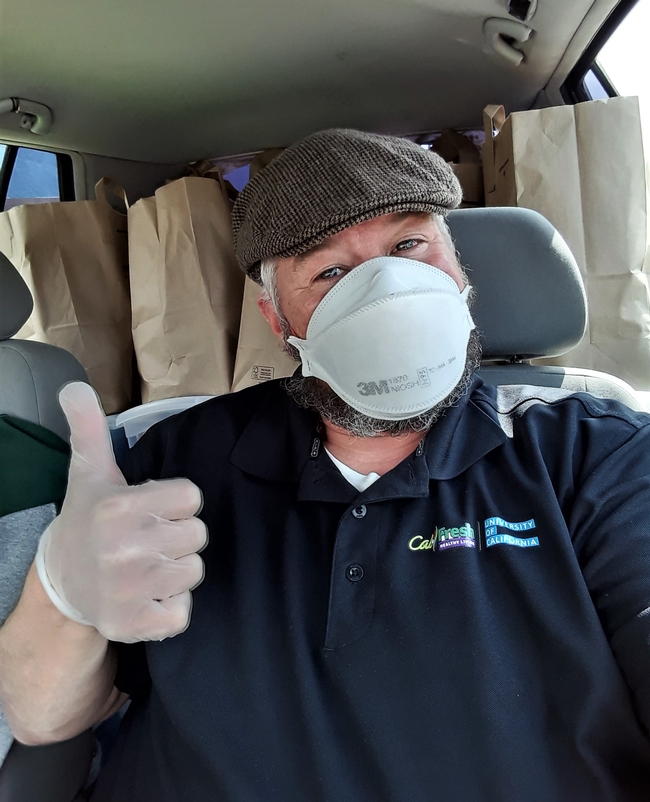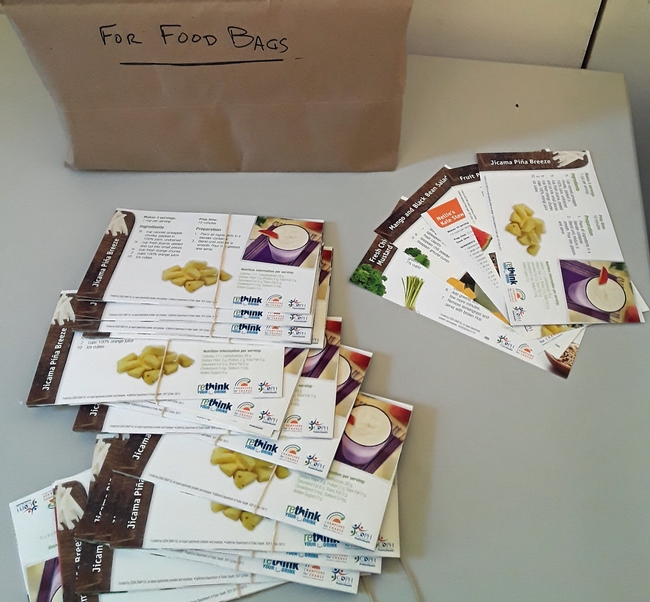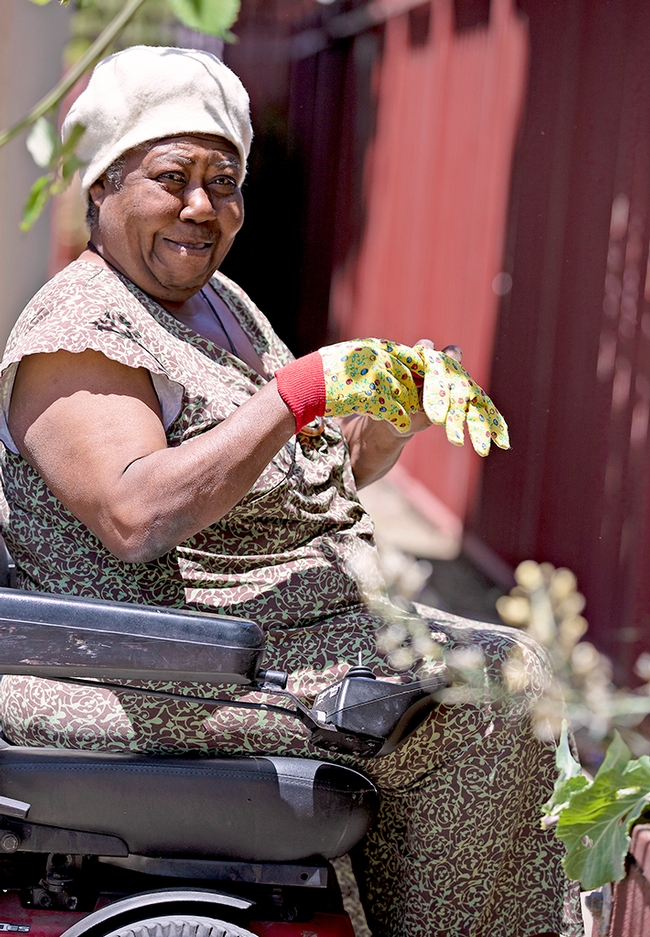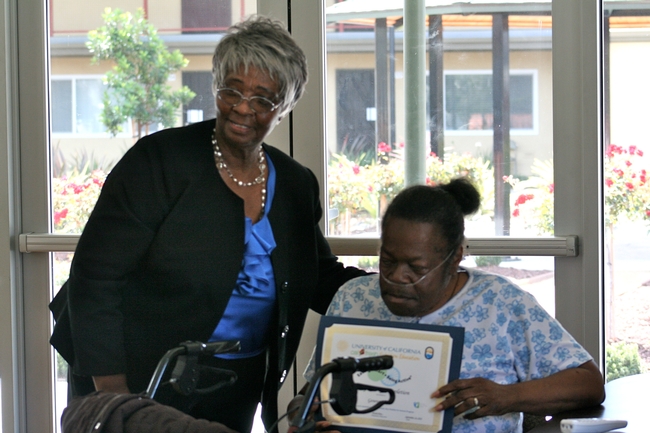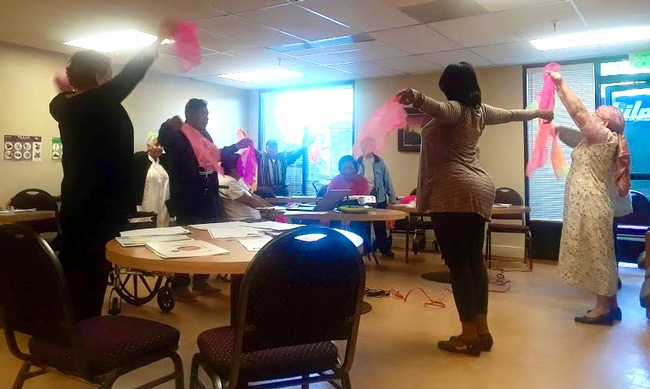Posts Tagged: CalFresh
Study: Government shutdown stressed food assistance program participants
A U.S. federal government shutdown can represent a minor inconvenience, a delay in paychecks, or – for people living in some of the most difficult circumstances – an extended period of hunger and anxiety.
A study published recently in the journal Nutrients provides a unique glimpse into the shutdown experiences of participants in CalFresh – California's name for the federally funded Supplemental Nutrition Assistance Program (formerly known as food stamps). Currently, about 42 million people participate in SNAP across the U.S.
In focus groups conducted in 2019 with 26 low-income CalFresh participants from four diverse California counties, participants shared how the 2018-19 federal government shutdown affected their SNAP benefits, their perception of the program and their faith in government.
One of the immediate effects of the 2018-19 shutdown was that February CalFresh benefits were distributed in January. And while that meant program participants saw extra benefits that month, they then had to wait 40 to 44 days until the March issuance – much longer than the usual 28 to 31 day cycle.
“What we saw with this study is that this extended lag in benefit receipt from January to March was devastating,” said Wendi Gosliner, senior researcher and policy advisor at the Nutrition Policy Institute of UC Agriculture and Natural Resources, and an author of the study funded by UC ANR.
She recalled one participant who, despite having a gastrointestinal issue that requires a special diet, had to eat canned food from the food bank that made her sick – rather than go hungry while waiting for her March benefits. Others described cascading financial challenges after using rent money for food in February, or going into debt to pay for food and getting behind on other expenses.
The study also chronicles the experiences of a woman who was anguished to hear the suffering of her daughter, also a CalFresh participant: “She called me several times crying, ‘Ma, I don't – we don't have enough food. What am I going to do…? You know, I can't afford to this and this and this.' And I can't help her.”
For individuals grappling with food insecurity, the stress of feeding their families was compounded by the uncertainties of the government shutdown. And while many participants exercised their agency and resourcefulness in coping with the situation, they also felt a degree of powerlessness amid the “confusion and craziness,” as one person put it.
“No one knew how long that shutdown was going to last; no one knew if the March benefits were going to be paid,” Gosliner said. “And as we learned, there were all kinds of stories circulating out there about what was going on with the uncertainty – a lot of people didn't have the information about what was actually happening.”
Some participants, seeing the “double benefit” in January 2019, thought that it was the last-ever distribution and that SNAP was ending. Others described being unable to get in touch with the CalFresh agency to get their questions answered about the benefits. Most participants had not heard about the disrupted benefit schedule before receiving the benefits. As a result, many people in the focus groups shared that their overall faith in government had been shaken.
Improving customer service, boosting benefit levels and adjusting eligibility and benefit formulas to reflect high cost-of-living and expenses related to working were three recommendations that came from the focus group participants.
A fourth recommendation tackles the shutdown issue head-on: Don't let it happen again.
“Congress should do absolutely everything in their power to be sure that the program operates on the usual time schedule – even if the government is shut down,” Gosliner said.
In the context of the global pandemic, when financial and social inequities and physical and mental health disparities have been laid bare, ensuring access to healthful food is even more important. And with studies showing that hospitalizations increase with longer lags between SNAP distributions, Gosliner said the “absolute last thing” the overburdened health system needs is more people in emergency departments seeking acute care.
“It's the worst time to be having people who need money to feed their families face additional insecurity,” she said. “It's critically important that Congress acts to be sure that there is not any disruption in benefits.”
The authors of the study, “Participants' Experiences of the 2018–2019 Government Shutdown and Subsequent Supplemental Nutrition Assistance Program (SNAP) Benefit Disruption Can Inform Future Policy,” are Wendi Gosliner, Wei-Ting Chen, Cathryn Johnson, Elsa Michelle Esparza, Natalie Price, Ken Hecht and Lorrene Ritchie.
The study can be found online at https://www.ncbi.nlm.nih.gov/pmc/articles/PMC7353319.
CalFresh can be used at farmers markets, but many recipients unaware
To improve access to fresh produce, more farmers markets need ability to process benefit cards
Over the past year, farmers markets in Marin and Sonoma counties have seen an increase in the number of shoppers using CalFresh (known nationally as SNAP or the Supplemental Nutrition Assistance Program) and Market Match.
A recent study conducted by University of California Agriculture and Natural Resources (UC ANR), found that CalFresh benefits distributed in Sonoma County in 2020 increased 64% and dollar for dollar Market Match incentives distributed increased 52% from the prior year. These promising trends are holding steady for 2021, year-to-date. However, many barriers remain for CalFresh users to shop at farmers markets.
In an effort to create equitable access to healthy food and support local farms, UC ANR researchers, with the help of community partners at Petaluma Bounty and the Center for Wellbeing, have been studying how to make farmers markets more welcoming and accessible for low-income shoppers and people of color.
“The goal is to better understand the factors that are barriers and facilitators for low-income CalFresh users to attend farmers markets, support innovations that make farmers markets more welcoming and inclusive spaces for all shoppers, and increase income for regional farms,” said Julia Van Soelen Kim, the project leader and UC Cooperative Extension North Bay food systems advisor.
The researchers, including Gail Feenstra, director of the UC Sustainable Agriculture Research and Education Program (SAREP), are studying these shopping habits to create a more positive community experience for low-income consumers and people of color at farmers markets. The project team aims to accomplish this goal by working with community partners to identify and reduce many of the barriers that CalFresh shoppers may face.
“There are a lot of reasons why people don't go – an important one is that many people do not know when and where farmers markets are located or when they are open,” said Feenstra. “And even though money is a universal language, signage in languages other than English is another factor in helping shoppers feel included.”
California has over 700 certified farmers markets; however many farmers market managers are still unable to process CalFresh, which can create difficulties for Calfresh shoppers to have financial access to purchasing local food. UC ANR researchers in San Luis Obispo and Santa Barbara have been conducting focus group studies with Spanish-speaking CalFresh users to better understand the difficulties they may face when attempting to use CalFresh benefits at farmers markets.
“Many of our respondents were unaware that they could use their CalFresh EBT card at the farmers market, and they were certainly unaware that they could get extra money to spend there through Market Match,” said Shannon Klisch, academic coordinator II for community health education at UC Cooperative Extension in San Luis Obispo County.
“At this point, many of these programs are so detailed and complicated that some of our participants talked about the difficulty they faced just signing up for CalFresh and staying on CalFresh - which has become one huge administrative hurdle that needs to be overcome,” said Klisch.
Some of the ideas for improvement include promoting accurate information about CalFresh benefits through one-on-one appointments, clearly displaying prices on signs in both English and Spanish, creating sales promotions, having a CalFresh representative present to answer benefit questions, and making sure all farmers market managers have the ability to process SNAP benefit cards. Yet, more research is still being conducted to understand all diverse perspectives and any unforeseen obstacles that might impact the implementation of these new ideas.
As their research continues, Van Soelen Kim, Feenstra and others will continue to analyze how to overcome any unforeseen obstacles that farmers, vendors, managers and shoppers may face when attempting to integrate these suggestions into farmers markets throughout the state.
To celebrate National Farmers Market Week, UC Cooperative Extension in San Luis Obispo County is hosting events:
Friday, Aug. 6, in Cambria: Join the festivities, play games, bring out your artistic talents with farmers market coloring pages, and listen to live music at 1000 Main St, 2:30 - 5:30 p.m.
Saturday, Aug. 7, in Paso Robles: Learn about delicious recipes that use seasonal produce, explore the market on a scavenger hunt with your kids, and learn more about using CalFresh EBT benefits to purchase fresh, local produce at 11th St & Spring St, 9 a.m. – 1 p.m.
Saturday, Aug. 7, in Templeton: Spin to win fresh farmers market produce and Artisan foods at Templeton City Park at 6th & Crocker Streets, 9 a.m. - 12:30 p.m.
CalFresh Healthy Living, UCCE educators and promotoras teach children gardening to encourage healthy eating
When local promotoras - volunteer health workers - team with CalFresh Healthy Living, UC Cooperative Extension educators, magic happens in school gardens. Trained by Ceres Partnership for Healthy Families in Stanislaus County, promotoras encourage children to eat well by growing their own produce in school gardens.
In 2018, twenty promotoras were trained to implement the Powerful People curriculum designed to engage community leaders. This is a partnership with Cultiva La Salud and Ceres Partnership for Healthy Families with funding support from Stanislaus County Health Services Agency. After the training, the promotoras worked with Ceres Unified School District to create school gardens at five Ceres elementary schools where their children attended afterschool programs that host UC Cooperative Extension CalFresh Healthy Living, UC programs.
A key initiative CalFresh, Healthy Living, UC (CFHL) offers in counties throughout the state involves growing fresh produce and making it a regular part of family diets. TWIGS: Youth Gardening and Healthy Eating Curriculum is a UC Agriculture and Natural Resources comprehensive curriculum with 16 garden lessons and 15 nutrition lessons available for free download from its website.
CFHL has teamed with promotoras in Stanislaus County since 2018 to ignite local participation in teaching children that participate in garden clubs about plant and nutrition science, from building soil to creating sumptuous salads. Two years ago, a new UCCE community education specialist was assigned to the project, Rosalinda Ruiz. A native Spanish speaker and a mother herself, Ruiz quickly developed close relationships with the promotoras.
“She's not just their teacher. They look to her as a mentor and a friend,” said Jaci Westbrook, CalFresh Healthy Living, UC Community Education Supervisor for Stanislaus and Merced counties.
Ruiz is also a certified UC Master Gardener, having completed rigorous coursework in sustainable food gardening, pest management, irrigation practices and soil health. She realized the TWIGS curriculum would reach more students if she taught the promotoras how to implement the lessons at school sites.
“This empowered the promotoras to gain knowledge and gave them a different purpose,” Westbrook said. “They don't need to rely on others to offer activities. Working in pairs or small groups, they are reaching 100 to 135 elementary school students themselves.”
Ruiz marvels at the many benefits of food gardening.
“Learning about gardening is the best thing families can do to teach their kids about healthy foods,” Ruiz said. “To grow your own food is a way to get fresh, nutritious food in your home. When kids see the fruit and vegetables growing and they're part of it, they are more willing to try it out.”
During the COVID-19 pandemic, promotoras instruction continued online using Zoom, which was completely new to them, and with WhatsApp, a familiar platform for promotoras to communicate among themselves.
The students are also getting virtual instruction. Promotoras have become proficient at Zoom and are offering simple garden lessons. Socially distanced in-person gardening lessons are also resuming to give children hands-on experience growing their own food.
Jobseekers get fresh start with JobTrain, CalFresh Healthy Living, UC
Jailene Mendoza is excited to start her new job as a medical assistant in sports medicine in Palo Alto, a job she landed after completing training with JobTrain.
After her job ended at the Housing Office at California State University, Stanislaus,Mendoza opted for training to help her move into a career that offers self-sufficiency. JobTrain provides career training in fields such as medical assistant, culinary arts, certified nursing assistant, carpentry, building maintenance, IT support and services.
For the past eight years, CalFresh Healthy Living, UC Cooperative Extension has partnered with the Menlo Park-based nonprofit to provide nutrition classes to unemployed residents of San Mateo County.
“These valuable life skills complement the vocational training they receive at JobTrain,” said Elaine Silver, nutrition educator for CalFresh Healthy Living, UCCE in San Mateo and San Francisco counties.
Based on 2018 SNAP-Education figures, 59% of all San Mateo County adults are obese or overweight and an estimated 68,000 county residents are food insecure. To address these health concerns among JobTrain students, CalFresh Healthy Living, UCCE delivers a course called “Plan, Shop, Save and Cook.”
In these lessons, JobTrain students learn about MyPlate, shopping on a budget, preparing healthy meals and snacks for families, reading food labels, and the importance of physical activity.
“CalFresh Healthy Living, University of California Cooperative Extension courses taught me and provided me with many resources,” said Mendoza, who took the course in the summer of 2020. “I am constantly using the eatfresh.org website for recipes. A handout that has really helped me is the "Eating Better on a Budget." I refer back to this because I have caught myself buying more than what is needed and it ends up going to waste.”
“I also like to watch what I eat because I have the BIGGEST sweet tooth and MyPlate has helped me out with that. I make sure I have my grains, fruits, vegetables and protein before I even consider having any type of sweets.”
Mendoza said she shared the "Eating Better on a Budget” tips with her family so they can reduce food waste.
In past years, Silver delivered the lessons in person, but switched to Zoom during COVID-19 stay-at-home orders to allow JobTrain students to continue building these important life skills.
Since October 2020, 128 JobTrain students have taken Silver's virtual Plan, Shop, Save and Cook lessons. The San Mateo County residents improved their skills in planning meals, comparing unit prices, shopping with a list, considering healthy food choices when feeding their families, and using nutrition facts labels, according to a survey conducted after the course.
“I started cooking healthier meals for my family, including veggies,” wrote one survey respondent.
Overall, 88% of the students reported improvements ranging from 43% comparing unit prices more often to 60% using nutrition facts more often. In addition, 28% of participants reported running out of food less often before the end of the month – suggesting they were more food secure after taking the course.
“Some of the changes I've made is that I now look at the unit price, just to make sure I am getting my money's worth,” wrote another student. “Also, I have started taking a grocery list with me so that I can make sure I can stay in budget and not buy things that I do not need.”
Asked about the impact these virtual classes have had on students' lives, the feedback from JobTrain instructors has been overwhelmingly positive.
“Students look forward to these classes each week, and I love to see how excited they get when they learn about new ways to incorporate healthy practices into their everyday lives,” said Emily Phillips, JobTrain culinary arts instructor, who noted Silver's food safety lessons reinforce training that she teaches people learning food preparation.
Silver also encourages JobTrain students to be physically active and to take advantage of free park passes offered by San Mateo County Public Health through their Park Rx Program. These free park passes incentivize families to spend time in nature to improve their health and well-being.
“Elaine's workshop has been very beneficial for the students at JobTrain. They utilize her suggestions on nutrition, saving techniques for food and applying healthy living for the student and their families,” said Xavier Gabut, who teaches nursing. “Elaine's workshops are relevant for my students, who will be entering the healthcare field, taking care of and educating patients on health.”
Mendoza, who earned a bachelor's degree in psychology from CSU Stanislaus, has returned to school. While working as a medical assistant in sports medicine, she will be completing her prerequisites for a degree in nursing.
Elders need food and family for the holidays
In the U.S., the holiday season of Thanksgiving, Hanukkah, Christmas, Kwanzaa, and New Year seems to be a nonstop race to the end of the year. Gathering to exchange gifts and eat special food and bountiful meals are common ways we celebrate. But the new ‘Grinch' of the season, COVID-19, prevents us from gathering with elders and other people outside of our households.
“We've asked the most vulnerable in our culture to shelter, and now they are the most isolated and most in need of seeing people,” said Kirsten Bibbins-Domingo, chair of the Department of Epidemiology and Biostatistics at UC San Francisco.
Historically, elders in many cultures have special places in the hearts of families during the holiday period of thanks, well-wishing, giving and remembering.
Elders play a major role in passing on oral family history and showing how to prepare cultural or traditional family foods, favorite recipes and other novelties handed down from one generation to the next. In contemporary society, extended-family households are rare so millions of seniors are living alone. Some elders have the financial capability and support systems to enjoy fulfilling experiences during the holidays, as much as the pandemic allows. Others will spend time lacking the basics — food, warmth and conversation.
The Centers for Disease Control and Prevention (CDC) published some considerations with tips to prevent the spread of COVID-19 throughout the season – stay home and avoid unnecessary travel. The best way to help keep friends and loved ones safe is to celebrate at home with immediate household members or connect virtually.
Seeing someone nourishes the soul
UC Cooperative Extension collaborates with local public and private community-based organizations and groups to serve senior residents.
As charter member of the Alameda County Community Nutrition Action Partnership (CNAP), inaugurated in 2006, UC Cooperative Extension coordinates with the Alameda County Health Department, Area Agency on Aging, Alameda County Social Services Agency, Alameda County Department of Education, Alameda County Food Bank and others.
During the pandemic, CalFresh Healthy Living, UC supervisor Tuline Baykal and community educators Max Fairbee and Leticia Christian continue to provide nutrition information to community members, inserting into food bags recipes, nutrition information and exercises that can be done at home. Max Fairbee, CalFresh Healthy Living, UC educator has also volunteered to deliver food bags to residents at a senior housing site.
“The food bags were hefty in the beginning, but are smaller now with less items available at the Food Bank,” observed Fairbee. “Still, they usually get some fresh produce, some canned fruit or veggies, bread, potatoes, onions, eggs (sometimes) and meat (sometimes). Spectrum Community Services also has provided emergency relief food boxes which contain non-perishable items (including canned tuna) generally once a month.”
The food bags are delivered without contact with the elders.
“We knock or ring the doorbell, announce we are dropping off food and leave it in a safe spot near their door for them,” he explained. “The seniors stay inside their homes, but they are happy and so grateful to see the volunteers and staff. I think that seeing someone actually means more to them than the food itself.”
Food and family top the holiday wish list of vulnerable seniors
In November 2020, CalFresh Healthy Living UC educators asked low-income housing site coordinators and center directors what seniors in their complexes and centers would appreciate most for the holiday season.
Their desires are very basic to daily living. The seniors suggested the following:
COVID-19 prevention: Hand sanitizer, gloves
Food: A traditional holiday meal, Safeway gift cards; fresh produce, vegetarian meal, pumpkin pie
Celebration: cookie box, fruit box, dried fruit box, nuts.
Family: Having immediate or extended family visit
Clothing: Warm blankets and warm clothing
How can we honor and assist seniors?
Consider sending meaningful holiday messages to seniors. Let the seniors in your community know it is to them we owe our lives, our survival, our respect and our gratitude.
Families and friends: Call elders living alone to ask about their well-being. Having a conversation with them in person – while standing outside their door, distanced and wearing your mask – helps keep them connected. Offer to assist them, using all COVID-19 precautions. Make time to shop for them to ensure they have their medicine and food that is safe and healthful, in small portions for one or two people, and easy to prepare or heat. See that their refrigerator is clean, set at the right temperature, and free of outdated food. They may need help putting out the garbage, cleaning and sanitizing the kitchen, and doing laundry. Let them know you are someone to call if they need immediate help.
Caregiving: Caring is the operative word. Treat seniors with patience, respect and understanding. Let them know they are worthy of the care you give.
With the COVID-19 constraints, underserved and vulnerable groups are facing an even greater crisis, especially with access to health services, housing, food and financial support. This holiday season and throughout the year, I encourage you to reach out to our elders. If you don't have money to spare, you can give emotional gifts. Your attention, conversation and compassion will be appreciated.
When COVID-19 restrictions ease, UC Cooperative Extension will resume educational activities where elders can socialize and be recognized when they participate in gardening, nutrition, physical activity and safe food handling classes. We have seen success in training elders as “wellness ambassadors” to encourage their neighbors to join our activities to address isolation and communication issues.



